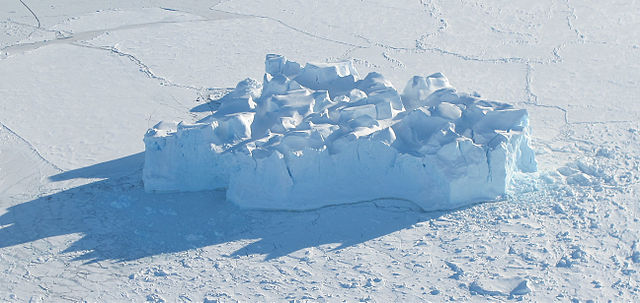Chapter 14: Ice
Learning Objectives
After reading this chapter you should be able to:
- describe the roles played by ice in global climate
- explain the difference between glacial ice and sea ice
- identify the steps in the formation of sea ice
- explain the difference between pack and fast ice
- explain the process of iceberg formation
- identify the ways that icebergs are classified
- explain how global ice cover is responding to climate change
Ice covers about 6% of the Earth’s surface, and is responsible for some of the most beautiful and spectacular features in the oceans. Yet what is less appreciated is ice’s influence on global weather and climate. For example:
- Ice cover affects the albedo (reflectivity) of the Earth’s surface, influencing the amount of solar radiation that is absorbed.
- Ice insulates the ocean from heat exchange with the atmosphere, preventing large fluctuations in polar water temperatures. One meter of ice cover reduces heat exchange between Earth and the atmosphere by 100 times.
- Seasonal freezing and thawing of ice moderates ocean temperatures through the latent heat of freezing and fusion.
- In all of these ways, ice contributes to the differential heating of Earth’s surface, which serves as the basis for global wind and climate patterns.
We have discussed these processes in previous chapters, so in this section we will examine the process of ice formation, the different types of ice that are found in the ocean, and the impacts of climate change on global ice cover.

the reflectivity of a surface of a planet (expressed as the percentage of light that reflects from the surface) (8.1)

